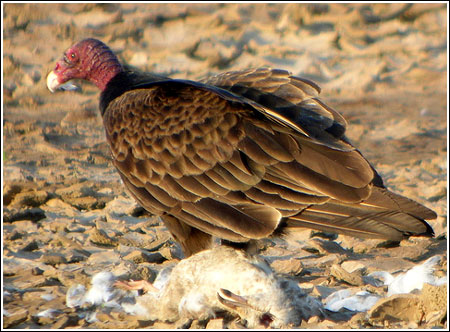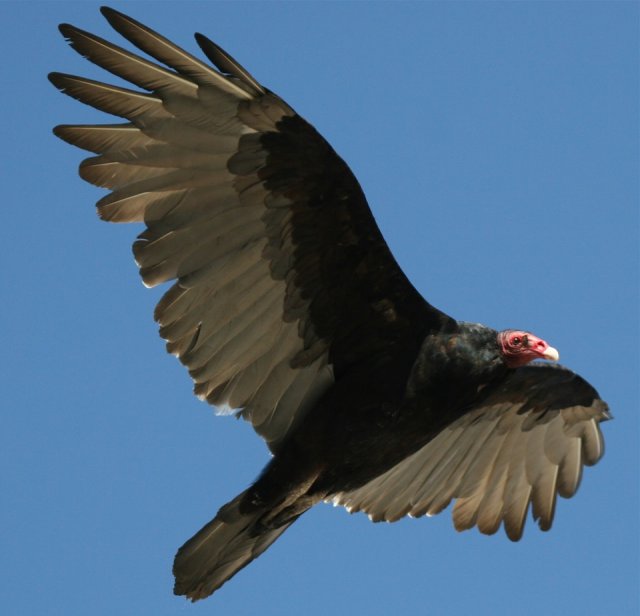No lie, there's a Turkey Vulture in my garage.
My brother goes "Emz, come here!"
Out his window I see a huge bird hopping in and out of the big hole in the top of my garage.
I couldn't decide if it was a turkey or a vulture. I didn't think there were vultures in MA, but it looked like a vulture.. and a turkey.
My brother googles "new england vultures," and sure enough.. it's a Turkey Vulture.
It's been hanging around for a couple of days. I think he wants to make my garage a nest. Nobody uses the garage(detached from the house), and the hole on top leads to the atticy part of the garage. It's like a cave kind of, the way that it is. Plus we live on top of a big hill, so he/she might like that as well.
Some info on the bird(68"-72" wingspan) from Wikipedia:
BTW, I babysat my little cousins(4&5 yrs old) at my house instead of theirs today, and they loved the fish tanks!


My brother goes "Emz, come here!"
Out his window I see a huge bird hopping in and out of the big hole in the top of my garage.
I couldn't decide if it was a turkey or a vulture. I didn't think there were vultures in MA, but it looked like a vulture.. and a turkey.
My brother googles "new england vultures," and sure enough.. it's a Turkey Vulture.
It's been hanging around for a couple of days. I think he wants to make my garage a nest. Nobody uses the garage(detached from the house), and the hole on top leads to the atticy part of the garage. It's like a cave kind of, the way that it is. Plus we live on top of a big hill, so he/she might like that as well.
Some info on the bird(68"-72" wingspan) from Wikipedia:
These aren't my pics bc i don't have a camera that hooks up to my computer, but here's what it looks like:The Turkey Vulture, Cathartes aura, also known in North America as the Turkey Buzzard (or just "buzzard"), is a bird found throughout most of the Americas. One of three species in the genus Cathartes, in the family Cathartidae, it is the most widespread of the New World vultures,[2] ranging from southern Canada to the southernmost tip of South America. It inhabits a variety of open and semi-open areas, including subtropical forests, shrublands, pastures, and deserts.[1] With a wingspan of 173–183 cm (68–72 in) and an average weight of 1.4 kg (3.1 lb),[3] the Turkey Vulture is a large bird. It has dark brown to black plumage; a featherless, purplish-red head and neck; and a short, hooked, ivory-colored beak.
The Turkey Vulture is a scavenger and feeds almost exclusively on carrion.[4] It finds its meals using its sense of smell, flying low enough to detect the gases produced by the beginnings of the process of decay in dead animals. In flight, it uses thermals to move through the air, flapping its wings infrequently. It roosts in large community groups. Lacking a syrinx—the vocal organ of birds—its only vocalizations are grunts or low hisses.[5] It nests in caves, hollow trees, or thickets, each year generally raising two chicks, which it feeds by regurgitation.[6] It has very few natural predators.[7] In the United States of America, the vulture receives legal protection under the Migratory Bird Treaty Act of 1918.[8]
BTW, I babysat my little cousins(4&5 yrs old) at my house instead of theirs today, and they loved the fish tanks!




